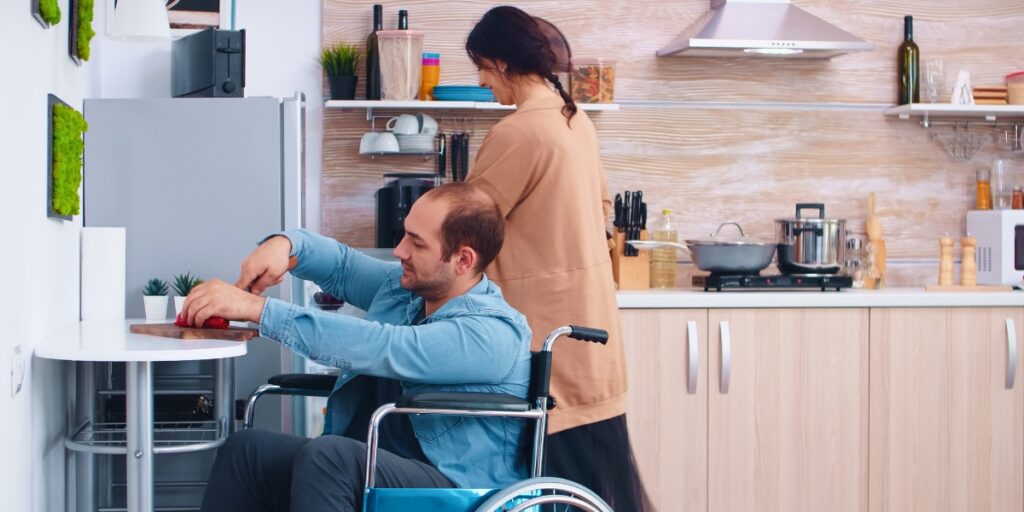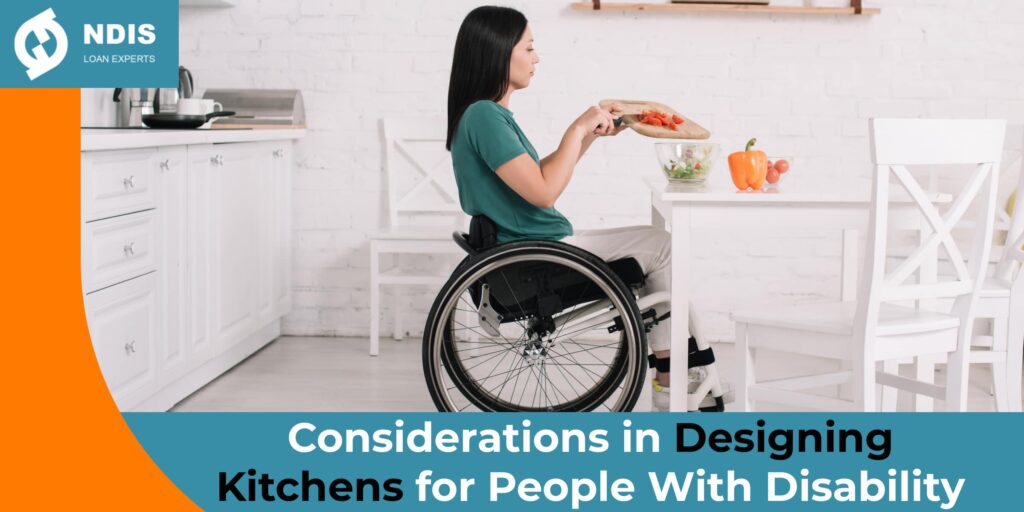A well designed kitchen has the potential to enhance the quality of life for individuals with disability. Beyond functionality, a thoughtfully crafted kitchen layout can help promote independence, ease of movement, and accessibility tailored to specific needs. From strategically positioned appliances to ergonomic features and accessible storage solutions, every aspect of the kitchen plays a pivotal role in empowering people to navigate culinary tasks with confidence and efficiency. As an essential part of daily living, a well-designed kitchen promotes autonomy while contributing to a more fulfilling and enriching lifestyle for people with disability — with this in mind, it’s clear to see how a home with a great kitchen can increase the desirability of your investment property when attracting tenants!
Essential design considerations for accessible kitchens
When designing a kitchen for someone with disability, there are three main considerations to prioritise.
Accessibility
Ensure that the kitchen layout allows for easy access to all essential areas and appliances, minimising physical barriers. This includes incorporating ample space for manoeuvring wheelchairs or mobility aids, maintaining clear pathways, and positioning countertops and cabinets at appropriate heights for users of varying abilities.
Ergonomics
Focus on creating a user-friendly environment by selecting appliances, fixtures, and fittings that are intuitive to use and require minimal physical effort. Consider features such as adjustable-height countertops, pull-out shelving, lever-operated faucets, and D-shaped handles for cabinets, all of which can enhance comfort and convenience for people with disability.
Safety
Prioritise safety measures to minimise the risk of accidents and injuries within the kitchen space. This may involve installing slip-resistant flooring, incorporating grab bars or handrails for support, ensuring adequate lighting for visibility, and implementing smart storage solutions to prevent clutter and trip hazards. It’s important to strategically consider the placement of heat sources and sharp objects to minimise potential hazards for users with limited mobility or sensory impairments.
By addressing these key factors of accessibility, ergonomics, and safety, you can create a kitchen environment that promotes independence, functionality, and overall well-being for individuals with disability.

Desirable features for accessible kitchens
In addition to the essential considerations of accessibility, ergonomics, and safety, there are some desirable features that can further enhance the functionality and comfort of a kitchen for someone with disability.
Smart technology integration
Incorporating smart appliances and technology can offer added convenience and accessibility. Features such as voice-activated controls, touchless faucets, and adjustable lighting systems can empower users to perform tasks more efficiently and independently. Smart kitchen gadgets can also assist with meal preparation, organisation, and monitoring, catering to the specific needs and preferences of people with disability.
Multi-height surfaces
Including countertops and work surfaces at varying heights provides flexibility for users of different abilities and mobility levels. This allows individuals to choose the most comfortable and accessible surface for performing tasks such as food preparation, cooking, and dining. Adjustable or motorised countertops can further enhance usability by accommodating users who may prefer to sit or stand while working in the kitchen. By incorporating these features, you can create a kitchen environment that meets the practical needs of individuals with disability while enhancing their overall comfort, efficiency, and enjoyment of daily activities.
Style
Implementing a user-centric approach to kitchen layout and aesthetics, considering accessibility but also aesthetics and personal preferences. Incorporating thoughtful design elements such as colour contrast for visual impairment, rounded edges for safety, and customisable features to accommodate individual needs and tastes.
A well-designed kitchen can significantly improve the lives of people with disability, promoting independence and accessibility tailored to their specific needs. From thoughtful layouts to ergonomic features and safety considerations, every detail contributes to empowering those living in the home.
Contact our NDIS Loan Experts today to explore impactful investments in accessible housing.


